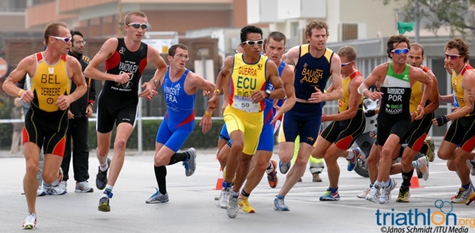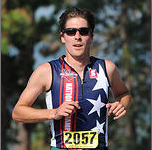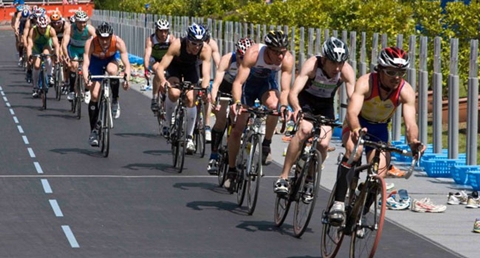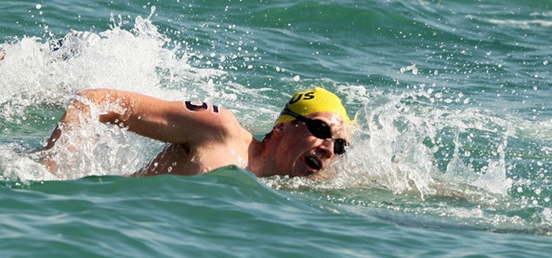How Specificity in your Training and Careful Planning can result in Success at Longer Distances
We have had a lot of requests recently about the topic of “hitting the wall” or “bonking”. Whatever you want to call it, we have all experienced it at some point. Essentially, it is the point during training or competition when you have exhausted or depleted your glycogen stores. It usually is described as a sharp drop in energy and sharp rise in fatigue. It is also more likely to occur during a bout of exercise that is of longer duration, like a marathon, that takes over 2 hours to complete. It is also less likely to happen during shorter events like 5 and 10K events, but can if these events follow tough weeks of training where the athlete is already depleted and not adequately refueled.
So Why does Bonking happen?
Glycogen is stored in muscles and the liver as well as floating around in the blood and as intensity or duration rises, the body consumes these stores, mixes them with a little oxygen and movement ensues. See Natural Food Sources of Glucose - The Body's Key Source of Energy
Sometimes, the body is really efficient at converting fat stores back into glycogen when the intensity is low and duration is long for the workload. Sometimes, if the intensity is extremely high and duration short, it consumes only that which is immediately present in the muscle and no oxygen or fat at all; think 100 meter dash all out.
During your shorter races, let’s say less than 2 hours, you have plenty of stored fuel in the body to handle the workload. Anything longer than two hours will require refueling. That may mean just a carbohydrate rich solution like Gatorade all the way to a mini meal like cyclists consume on the bike during longer races.
Endurance Running Energy Systems
But avoiding the “bonk” isn’t just about getting fuel onboard during a race. Sometimes factors like intensity will reduce your ability to consume the calories needed to keep going. And that leads us to the specificity of training. Think of it as “energy systems”.
Imagine you have been competing at 5K’s by running 35 miles a week and at your last race you completed the distance in 17 minutes. You are in great shape and decide to run a marathon. Your regular training regimen includes speed work and recovery runs and a longer run on the weekend. During the marathon you are keeping a steady pace and refueling when you can, but at mile 18, you hit the wall. So what went wrong? The problem lies with the type of training you have been doing and the energy system you are recruiting.
When training for different events, the specificity of that distance recruits and or develops different muscle fibers, develops capillary beds, and builds different levels of tolerance for acidity and when trying to digest the calories you need to refuel. What this means is that just because you are trained for a world-class 5K doesn’t mean you can extrapolate that out to a great marathon time. You just consume and convert fuel differently at varying intensities and durations.
If we take the same subject above and develop his/her training to improve their economy at the longer distance, then we can push that wall out a little further. This means that we will consume that precious glycogen at a slower or more economical rate. It also means that the body can more easily digest those calories we take in during the event. It’s not just as simple as going more slowly, it’s about being more efficient and developing the right energy system.
Training with Specificity
Simply put, you need to simulate your race environment during some of your training. If you are going be racing cross-country, training only on the roads will put you at a big disadvantage. If you are planning to use some form of gel to refuel during your race, don’t train with only bananas. If you are going to run a marathon, don’t train as if you are going for a 5K PR. This doesn’t mean you will run a long run every day at marathon pace. But you will have to do some long runs that tax your system and affect a change in the energy systems you regularly use.
Avoiding the Bonk
Staying within your envelope requires you to really be aware of your abilities. When I was racing at altitude during a half-ironman effort, I remember clearly the feeling of going too deeply into oxygen debt. During the run, whenever I dropped my pace to below 5:50 per mile, I would start to feel my fingers tingle. Pins and needles at that pace meant that I couldn’t deliver the required amount of oxygen to sustain the effort. I would back off to close to 6:00 pace and it would clear up.
I became acutely aware of my needs and responded to make sure I could finish the half-marathon portion of the race in that lower atmospheric pressure. Substitute your nutritional needs in that case and you will be in better shape finishing your race without hitting the wall. Think ahead and fuel up when you can and at regular intervals you have tested in training.
Summary on How to Avoid "Hitting the Wall"
Here are some things to think of this weekend if you have to race and are worried about hitting the wall:
1. Stay within your envelope. Don’t be too eager for that finish line if you have 3 hours of racing ahead of you. Stay calm and set a pace that is slower to begin with and negative split your miles.
2. Refuel if you can. Take in a little often rather than a lot too late. If you run too hard, the parasympathetic nervous system (which includes digestion) is de-prioritized and you will have a belly full of whatever for the rest of your effort.
3. Be aware of the training you have done and how that translates to a longer effort.
4. Carbo-load for races of more than two hours. You have plenty of energy for shorter races so don’t overdo it at the pasta dinner for those. You’ll just be carrying around a lot of extra water, among other things. But plan for the longer stuff and when you will refuel during the race (I like to take something like a gel or solid every 30 minutes in longer events). Stay hydrated in between fuel breaks with water, and stagger fluid intake with Coke or Gatorade-like supplements. See Hydration and Electrolytes - Impact on Athletic Performance
5. Start thinking about your next race and how you will build the correct energy system to complete it with confidence and fuel in the tank.
Good luck!
Chris Harig is competitive runner, multisport athlete, and coach based in the
Seattle area. In 2007 and 2008, he was the top American at the ITU Duathlon
World Championships. Chris is the 2010 USA Long Course Duathlon National Champion. More about Chris Harig.





